The main reasons for ONU weak light are two aspects: equipment reasons and excessive attenuation of ODN link. Because equipment issues are easy to detect and eliminate them from the network management system in time, so now ONU weak light is mainly caused by excessive attenuation.
The ODN link is divided into 4 sections, including backbone, distribution, introduction, and household. Which section is most likely to cause excessive attenuation?

For the ODN link with weak light, we tested the downstream optical power of PON at the backbone cabinet and the distribution cabinet, and did not find any significant abnormalities. When testing at the fiber distribution box, only about 30% of the attenuation anomalies were found, as shown in the table 1 below, indicating that about 70% of the weak light problems occurred in the household section.
| Link | ONU receiving light (dBm) | Fiber splitter box receiving light (dBm) | Remark |
| 1 | -27.19 | -26.20 | Poor connection of drop cable |
| 2 | -29.95 | -19.90 | |
| 3 | -27.02 | -25.80 | Coupling failure |
| 4 | -27.19 | -19.70 | |
| 5 | -27.44 | -20.00 | |
| 6 | -27.21 | -24.10 | |
| 7 | -27.38 | -23.90 | |
| 8 | -30.00 | -28.00 | Splitting failure |
| 9 | -28.60 | -18.00 |
The household section usually uses drop cable with a length of less than 100 meters, which is only about 1% of the entire ODN link length. But why does it result in significant attenuation?
Fault phenomenon
In article ”What is the difference, G657A2 vs G652D”, we have analyzed that the use of G.652 fiber optic pigtails at the fiber distribution box and optical modem is the main reason for the excessive attenuation of the drop cable. However, about 25% of the excessive link attenuation is still caused by the bending of drop cable itself.
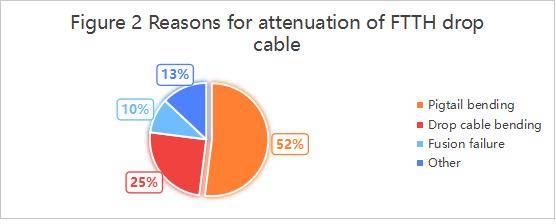
The fiber optic FTTH drop cable use G.657A2 fiber which is with good bending resistance. Generally, if the bending radius does not exceed 7.5mm, the macro bending loss can be basically ignored. But the phenomenon discovered at the fault site is indeed related to the bending of the drop cable.
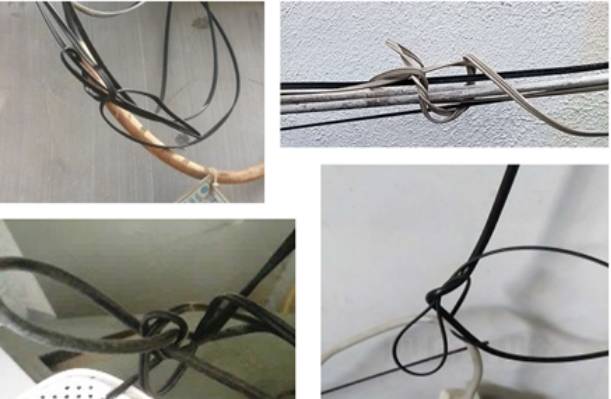
When these bends are untied, the malfunction disappears; If it’s not a macro bending loss, what could be the reason for it?
Fault Cause Analysis
Considering that in some scenarios, the drop cable may experience stress, we tested the additional loss of the drop cable under bending and stress conditions and found that bending and stress did not significantly increase the additional loss.
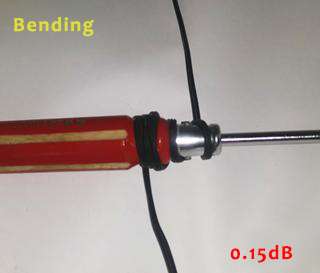
Is it related to fiber optic cable knots?
Because from the fault phenomenon, it can be seen that the drop cable at the fault point often has knots. After testing, it was found that knotting does not significantly increase additional losses. Even if the drop cable becomes tangled and subjected to external forces, the additional loss still does not significantly increase.

After careful study of the photos of the household section where the on-site faults occurred, it was found that in most cases, there were twisted drop cables. Therefore, additional loss tests were conducted on the twisted cables.
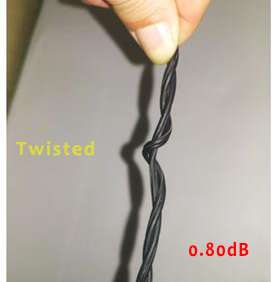
The additional loss of the drop cable increases significantly after twisting. When knotting the cable in a twisted pair, the increase in additional loss is more significant.

Under the condition of twisting and knotting the drop cable, and applying external force for testing:
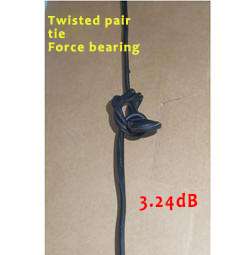
The additional loss is as high as 3.24dB. It seems that the twisting of the drop cable is the main cause of the additional loss in the household section. This is basically consistent with the situation at the fault site.
So the real test result is that: ftth drop cable use G.657A2 fiber, as long as the bending radius is not less than 7.5mm, even if there is bending, knotting, or even external force under bending or knotting, the additional loss will not significantly increase. But if twisting occurs, it will result in significant additional losses. If knots are tied again or even subjected to external forces while twisting, the additional losses will significantly increase.
Therefore, Yingda suggest especially in installation and maintenance during household section of ODN network, please avoid to twisted the ftth drop cables, so as to keep good quality of fiber optic signal.

